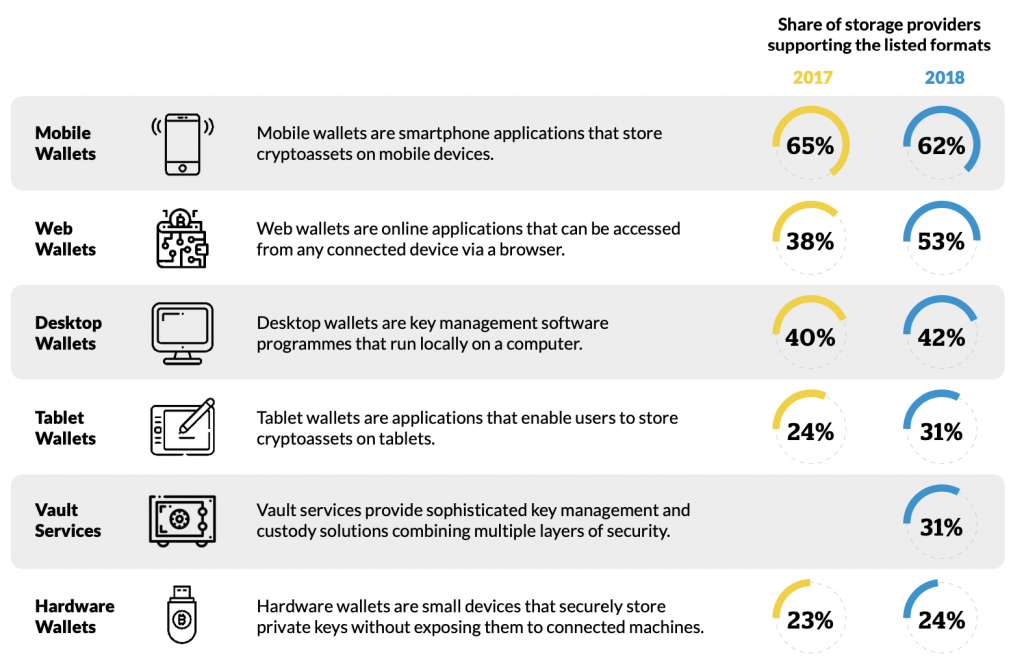Judge Business School, a subsidiary of the University of Cambridge, has published its second annual report into the cryptoconomy. Its inaugural report surfaced in April 2017, just as crypto mania was exploding. A lot has happened in the ecosystem since then, and the school’s new 96-page report covers a good portion of it, with a particular focus on cryptocurrency mining, exchanges, storage, and payments.
Also read: BTC Gets a Health Check in ‘The State of Bitcoin’
Crypto Sector Receives Its Second Report in a Week
 Within days of cryptocurrency enthusiasts being treated to a 59-page health check in “The State of Bitcoin,” a second weighty tome has hit their desks. Cambridge University’s “Global Cryptoasset Benchmarking Study” is as comprehensive as it sounds. Not only is the reference report packed with even more information than Delphi Digital’s effort, but it zeroes in on areas that the previous report skirted.
Within days of cryptocurrency enthusiasts being treated to a 59-page health check in “The State of Bitcoin,” a second weighty tome has hit their desks. Cambridge University’s “Global Cryptoasset Benchmarking Study” is as comprehensive as it sounds. Not only is the reference report packed with even more information than Delphi Digital’s effort, but it zeroes in on areas that the previous report skirted.
Judge Business School’s second crypto assets report draws a number of primary findings including:
- Millions of new users have entered the ecosystem, but most remain passive.
- The majority of mining facilities use some share of renewable energy sources as part of their energy mix.
- Mining is less concentrated than commonly perceived.

Unpacking a Trove of Data
While the price of crypto assets has tumbled through most of 2018, user adoption has continued to grow for many leading digital currencies. The Cambridge report found that “Total user accounts at service providers [exchanges, etc.] now exceed 139 million with at least 35 million identity-verified users, the latter growing nearly 4x in 2017 and doubling again in the first three quarters of 2018.” The authors conclude, however, that only 38 percent of these users can be regarded as currently active. It is reasonable to assume that a significant portion of these individuals will reignite their interest in cryptocurrencies once the market recovers.
Another key finding from the report concerns the growth in industry employment. Despite having been published within days of various crypto projects including Consensys, Spankchain, and Steemit all downsizing, the report highlights the significant expansion of the cryptocurrency workforce since 2016. Back, then, the average cryptocurrency business had just five employees. Today that figure stands at 20. Other interesting findings from the university’s report include:
- Two-thirds of specialized custodial exchanges do not have a refund procedure in the case of customer funds getting lost or stolen.
- The amount of funds held in cold storage by crypto businesses surveyed stands at above 80 percent.
- More than 80 percent of firms do not publicly share information about security audits, indicating a general unwillingness to divulge security-critical information.
 The very fact that Bitcoin and its supporting cryptocurrencies are now regularly inspiring high-level research initiated by august institutions speaks volumes of the progress that digital assets have made over the past 18 months. Britain’s second oldest university, Cambridge University was founded in 1209 and granted a Royal Charter by King Henry III two decades later. Cryptocurrency proponents will be hoping that Bitcoin goes on to have an equally long and distinguished history.
The very fact that Bitcoin and its supporting cryptocurrencies are now regularly inspiring high-level research initiated by august institutions speaks volumes of the progress that digital assets have made over the past 18 months. Britain’s second oldest university, Cambridge University was founded in 1209 and granted a Royal Charter by King Henry III two decades later. Cryptocurrency proponents will be hoping that Bitcoin goes on to have an equally long and distinguished history.
Do you think the quality of research into crypto assets is improving? Let us know in the comments section below.
Images courtesy of Shutterstock and Business Because.
Need to calculate your bitcoin holdings? Check our tools section.
The post Benchmark University Study: Millions of New Crypto Asset Users – Most Remain Passive appeared first on Bitcoin News.
Source: NewsBtc





















